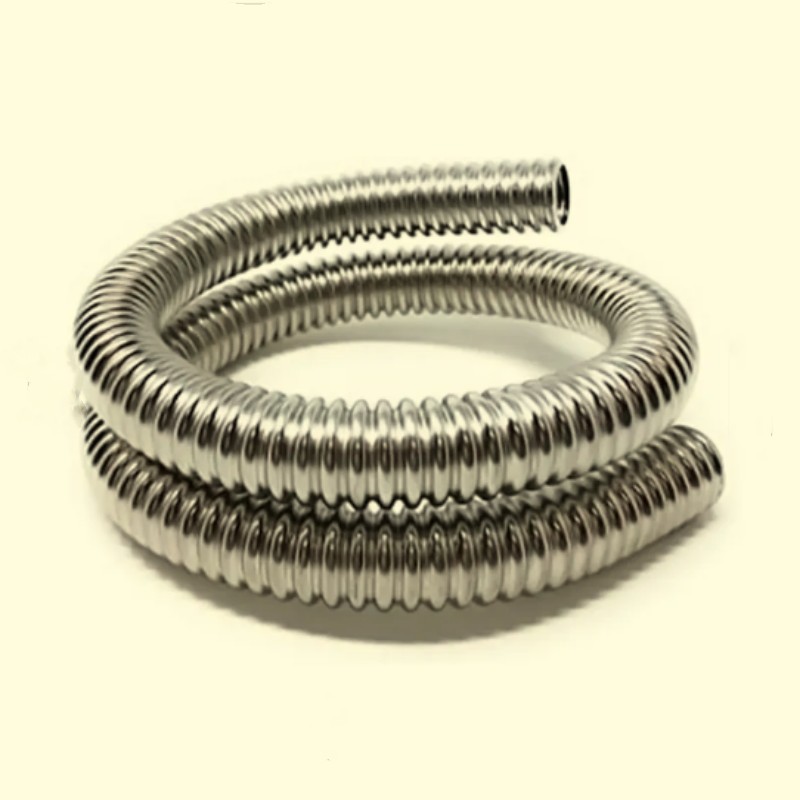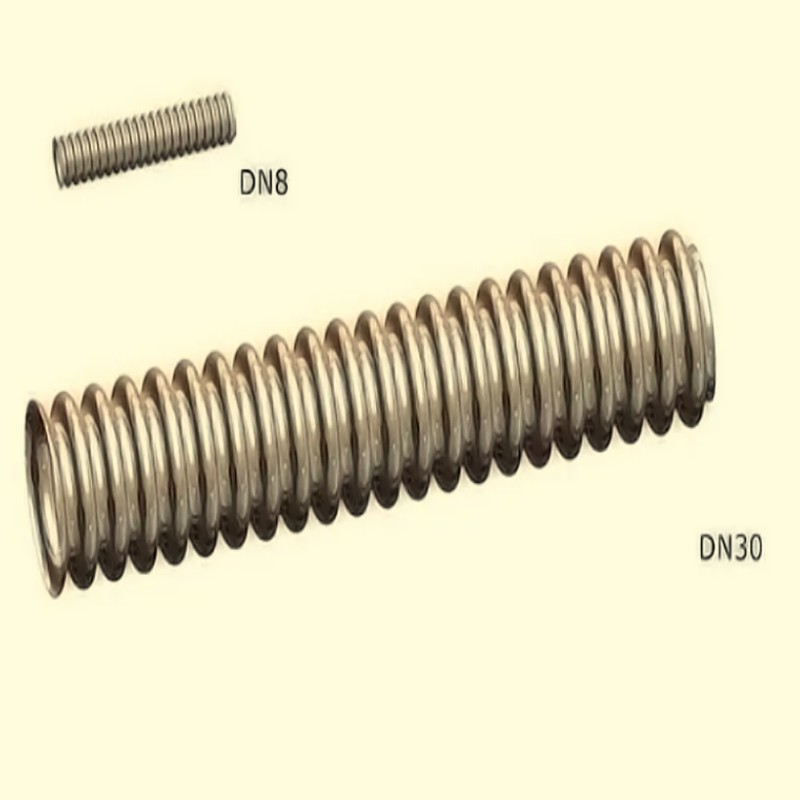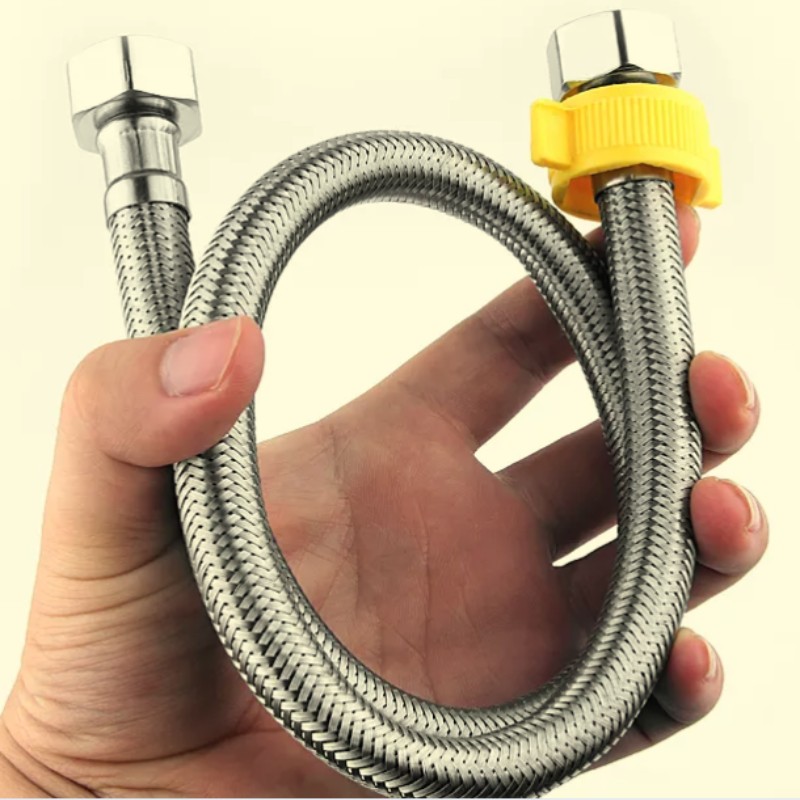ліп . 22, 2025 11:01 Back to list
Durable 1/2 ID Rubber Hose – Flexible, Heat Resistant, Multiple Sizes
Exploring Specifications, Industry Trends, and Technology Insights
Official Website: www.bailihydraulichose.com
Contact: +86-318-2660005 | Mobile: +86-18631888886
Email: xulei@bailihose.com
Address: NO.20 XIANGSU ROAD, HENGSHUI CITY, HEBEI, CHINA
Table of Contents
- 1. Introduction to 1/2 ID Rubber Hose and Industrial Hose Types
- 2. Market Overview and Industry Trends
- 3. Technical Parameters & Standards
- 4. Key Product — FLEXIBLE STAINLESS STEEL METAL HOSE
- 5. Applications and Use Cases
- 6. Data Visualization: 1/2 ID Rubber Hose & Metal Hose Parameters
- 7. Frequently Asked Questions (FAQs)
- 8. References & Industry Sources
1. Introduction to 1/2 ID Rubber Hose & Related Industrial Hoses
The 1/2 ID rubber hose is a versatile and fundamental component in industrial fluid and air delivery systems, widely recognized for its adaptability, resilience, and performance. Alongside, dimensions like 1/4 rubber air hose, 3/4 inch rubber hose, braided rubber hose, gates rubber hose, heat resistant rubber hose, power steering rubber hose, rubber air brake hose fittings, and rubber air hose 3 8 complete the family of vital industrial and automotive hoses.
HENGSHUI BAILI HOSE CO., LTD. is an industry-leading manufacturer, offering a comprehensive portfolio with a high degree of technical sophistication and custom engineering to meet rigorous industry standards globally.



2. Market Overview & Industry Trends
According to a recent market report by MarketsAndMarkets, the global demand for rubber hoses, especially in automotive, industrial equipment, and hydraulic applications, continues on an upward trend. Growth drivers include:
- Rising automation and industrialization expanding use of rubber air brake hose fittings and braided rubber hose products.
- Regulatory focus on safety and durability: Higher grades like heat resistant rubber hose are being adopted across industries.
- Innovation in synthetic rubber blends and reinforcement materials, notably AISI 304/316 stainless steel braiding for flexible, corrosion-resistant hosing systems.
- Customization for niche sectors: e.g., power steering rubber hose in automotive, food-grade hoses for beverage, and chemical-resistant types for pharma and oil & gas.
The Asia-Pacific region leads in production & consumption, underlined by rapid infrastructure growth and manufacturing base, with China being the foremost exporter (source: Hydraulics & Pneumatics).
3. Technical Parameters & Industry Standards
Technical specifications for hoses such as the 1/2 ID rubber hose are governed by standards including SAE, DIN, ISO, and ASTM. Core parameters include:
- Inner Diameters (ID): 1/4", 3/8”, 1/2", 3/4", 1", etc.
- Material: SBR, EPDM, NBR, neoprene, or specialty synthetics.
- Reinforcement: Textile/braided steel wire, polyester, or fibers for enhanced strength and flexibility.
- Temperature Range: -40°C to +120°C typical, up to 600°C for products like FLEXIBLE STAINLESS STEEL METAL HOSE.
- Pressure Ratings: 150 PSI (low pressure) up to 5,000+ PSI for hydraulic/braided versions.
All specifications are tailored according to application — air, water, oil, chemical, or steam conveyance.
4. Key Product Spotlight: FLEXIBLE STAINLESS STEEL METAL HOSE
As industrial operations demand greater flexibility, durability, and thermal resistance, the FLEXIBLE STAINLESS STEEL METAL HOSE by HENGSHUI BAILI HOSE CO., LTD. stands as a benchmark in the hose manufacturing sector.
- Structure: Tube: AISI 316L/AISI 304L, Reinforcement: 1 stainless steel braid (AISI 304).
- Temperature Range: Optimum resistance from –270°C (liquid helium conditions) up to 600°C.
- Applications: Petrochemical, aerospace, cryogenic, steam, high-temperature process, and more.
- More details: Product page.
5. Applications and Use Cases
- 1/2 ID Rubber Hose: Air tools, compressors, pneumatic systems, industrial cooling, and automotive lines.
- 1/4 Rubber Air Hose: Pneumatic small tools and instrumentation.
- 3/4 Inch Rubber Hose & 3/4 ID Rubber Hose: High-volume liquid transfer, discharge/suction pumps, and agriculture irrigation.
- Braided Rubber Hose: Hydraulic circuits, high-pressure fuel/oil applications, fire fighting lines.
- Gates Rubber Hose: Heavy-duty equipment, construction machinery, long-life assembly.
- Heat Resistant Rubber Hose: Superheated water/steam, chemical transfer, engine coolant systems.
- Power Steering Rubber Hose: Automotive steering, transmission, and high-pressure hydraulic systems.
- Rubber Air Brake Hose Fittings: Commercial vehicles, buses, and trucks for air brake systems.
- Rubber Air Hose 3/8: Small pneumatic equipment, workshops, manufacturing lines.
Each hose type is optimized for its application—balancing pressure, temperature resistance, chemical compatibility, and service life.
6. Data Visualization: 1/2 ID Rubber Hose & Metal Hose Technical Data
6.1. 1/2 ID Rubber Hose Technical Specifications Table
| Parameter | Value / Description |
|---|---|
| Inner Diameter (ID) | 1/2 inch (12.7 mm) |
| Outer Diameter (OD) | 0.75 inch (19.1 mm) typical |
| Working Pressure | Up to 300 PSI (20 Bar), varies by construction |
| Burst Pressure | 900 - 1200 PSI (60-80 Bar) |
| Temperature Range | -40°C to +120°C (Standard); up to +150°C for heat resistant types |
| Material | SBR/EPDM/NBR synthetic rubber (custom blend options available) |
| Reinforcement | High-tensile polyester/fiber braid OR steel wire braid |
| Application | Air/water delivery, pneumatic tools, hydraulic fluid transfer, general industry |
| Standards | SAE J1402, DIN EN 853/854, ISO 2398, ASTM D380 |
6.2. 1/2 ID Rubber Hose Parameter Trends (ECharts)
6.3. Flexible Stainless Steel Metal Hose Main Technical Index Comparison
6.4. Metal Hose Composition Pie Chart
6.5. Metal Hose Technical Index Table
| Parameter | Flexible Stainless Steel Metal Hose |
|---|---|
| Tube Material | AISI 316L or AISI 304L Stainless Steel |
| Reinforcement | Single Stainless Steel Braid (AISI 304) |
| Temperature Range | -270°C to +600°C |
| Nominal Pressure | Up to 350 Bar (varies by size) |
| Bend Radius | Min. 3x Hose OD |
| Applications | Cryogenics, Steam, Gas, Petrochemical, Food, Aerospace |
7. Professional FAQ: 1/2 ID Rubber Hose and Industrial Hose Technology
Q1: What materials are commonly used for 1/2 ID rubber hose construction?
A: The most prevalent materials include SBR (styrene-butadiene rubber), EPDM (ethylene propylene diene monomer), and NBR (nitrile butadiene rubber). For higher temperature/chemical resistance, CSM (chlorosulfonated polyethylene) or silicone may be used. The precise material is chosen based on application requirements and fluid conveyed.
Q2: What is the role of reinforcement in hoses like braided rubber hose and 1/2 ID rubber hose?
A: Reinforcement—such as high-tensile polyester braid, textile yarn, or stainless steel wire braid—prevents hose expansion under pressure, increases burst strength, and improves longevity and kink resistance, especially critical in high-pressure or pulsed flow applications.
Q3: How is working pressure quantified in industrial rubber hoses?
A: Working pressure is the maximum recommended pressure at which a hose can operate safely, commonly defined with a 3:1 or 4:1 safety factor versus burst pressure (e.g., if burst pressure is 1200 PSI, the hose's working pressure would be rated at 300-400 PSI).
Q4: What standards govern 1/2 ID rubber hose and rubber air brake hose fittings?
A: Widely recognized standards include SAE J1402 (air brake lines), DIN EN 853/854 (hydraulic hoses), ISO 2398, and ASTM D380 (general industrial hoses). Adherence ensures compatibility, safety, and reliable performance.
Q5: What makes heat resistant rubber hose unique versus standard types?
A: Heat-resistant rubber hoses are typically composed of EPDM, silicone, or fluorocarbon elastomers, offering continuous service temperatures up to 150°C or higher, and enhanced chemical/oil resistance—ideal for automotive, chemical, and steam service.
Q6: How should power steering rubber hose be installed for optimal performance?
A: Power steering hoses must be routed with minimal bends, securely clamped, and installed with proper end fittings certified to relevant automotive standards to prevent leaks, vibration, and undue stress on joints.
Q7: Why is AISI 304/316L stainless steel used in metal hose manufacturing?
A: AISI 304/316L offers corrosion resistance, mechanical strength, and thermal endurance. 316L is favored for chemical/petrochemical exposure, while 304 is superior for general thermal and mechanical durability.
8. Conclusion & Industry References
Rubber hoses, led by the versatile 1/2 ID rubber hose and advanced stainless steel metal hoses, remain bedrocks of modern fluid handling technology. HENGSHUI BAILI HOSE CO., LTD. upholds EEAT principles—expertise, authoritativeness, and trustworthiness—by delivering globally certified products tailored for industrial, automotive, and special applications.
Commitment to innovation, customization, and strict adherence to international standards ensures optimal safety, reliability, and cost efficiency.
HENGSHUI BAILI HOSE CO., LTD.!
Official Website: www.bailihydraulichose.com
Tel: +86-318-2660005 | Mobile: +86-18631888886
Email: xulei@bailihose.com
Address: NO.20 XIANGSU ROAD, HENGSHUI CITY, HEBEI, CHINA
- MarketsandMarkets Rubber Hose Market Research
- Hydraulics & Pneumatics: Choosing Among Types of Hydraulic Hoses
- Rubber Manufacturers Association: Hose Handbook (PDF)
- SAE J1402 - Air Brake Hose and Hose Assemblies
- Hydraulics & Pneumatics Industry Forum: Hydraulic Hose Selection
This is the last article
-
Durable 1/2 ID Rubber Hose – Flexible, Heat Resistant, Multiple Sizes
NewsJul.22,2025
-
Durable 3/8 Rubber Air Hose - High Pressure & Flexible
NewsJul.21,2025
-
Premium 3/8 Rubber Air Hose - Flexible & Durable for Pneumatic Systems
NewsJul.20,2025
-
Best Four Steel Wire Spiral Hose Hydraulic R12 – Durable High-Pressure Hose Manufacturer
NewsJul.08,2025
-
High-Quality 1/4 Hydraulic Hose – Soft, Flexible & Durable Rubber Hoses for Industrial Use
NewsJul.08,2025
-
1 1 2 Inch Hydraulic Flexible Hose - Durable, Reliable, High-Pressure Solutions
NewsJul.07,2025
